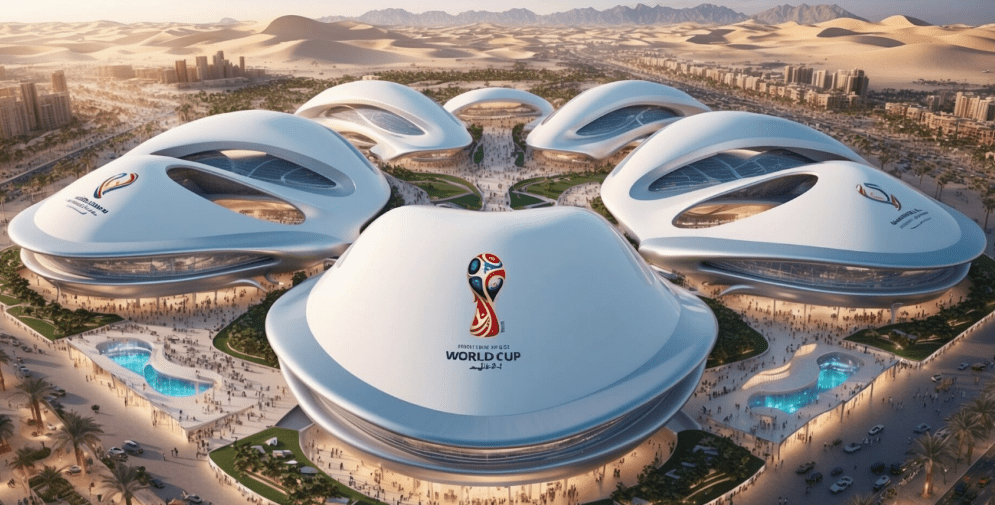By Islam Salah
As Saudi Arabia gears up to host the 2034 FIFA World Cup, its plans for the tournament go beyond simply hosting the world’s biggest sporting event—they’re creating an impressive legacy.
The Kingdom is set to build 15 stadiums, 11 brand-new constructions, and four refurbished existing venues. These showcase Saudi Arabia’s commitment to sports and will set a new standard for stadium design and functionality.
Here’s a closer look at some of the standout stadiums that will define Saudi Arabia’s 2034 World Cup.
King Salman International Stadium
The King Salman International Stadium in Riyadh will be the largest venue in Saudi Arabia, with a seating capacity of 92,000. Not only will it host the opening and final matches of the 2034 World Cup, but it’ll also be the official national stadium.
Its size and scale make it a perfect stage for major international tournaments, and it’s slated to be completed by 2029.
NEOM Stadium
Among the most eagerly anticipated venues for the 2034 World Cup is NEOM. This stadium will take football to new heights—literally!
Sitting 350 meters above the ground, NEOM Stadium is part of Saudi Arabia’s The Line project, an ambitious, linear city designed to redefine urban living. With a seating capacity of 46,000, the venue will offer panoramic views of the desert landscape and the city’s skyline.
Prince Mohammed Bin Salman Stadium
The Prince Mohammed Bin Salman Stadium in Riyadh, with a seating capacity of 47,000, is a stunning showcase of modern design that uses iridescent glass, LED screens, solar panels, and perforated metal.
The stadium will be a part of a larger complex featuring various sports facilities, luxury accommodations, and 58 attractions. After the World Cup, it’ll transform into a versatile venue for sports, concerts, e-sports, and even house an Olympic Museum.
Aramco Stadium
The Aramco Stadium will be another key venue for the 2034 World Cup, with a capacity of over 46,000 seats. Already under construction, it’s expected to be completed by 2026.
This venue will also serve as a host for the 2027 AFC Asian Cup. Surrounded by mixed-use areas, it’ll become a major hub for community engagement, business, and tourism.
Jeddah Central Development Stadium
The Jeddah Central Development Stadium, with a seating capacity of 45,000, is designed to be more than just a football venue. Surrounding the stadium will be four vibrant villages offering a mix of leisure, retail, educational, and medical facilities, making it a community hub for fans and residents alike.
After the World Cup, the stadium will continue to play a central role, serving as a venue for various events, including conferences and concerts.
Stadiums Beyond Football: Building a Legacy
While these stadiums are undoubtedly designed to host the World Cup, they are also integral to Saudi Arabia’s broader ambitions. Many of the stadiums are being developed alongside larger projects designed to boost tourism, promote sustainability, and provide long-term benefits to the community.
WE ALSO SAID: Don’t Miss It…Your Ultimate Guide to AFCON 2019’s Stadiums



